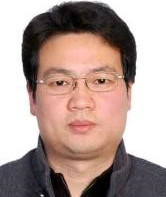| Biography | |
|---|---|
 Prof. Jietai Jing East China Normal University, China |
|
| Title: Quantum Metrology with SU(1,1) interferometer | |
| Abstract: An SU(1,1) interferometer can be realized by replacing the beam splitters in the Mach-Zehnder interferometer (MZI) with parametric amplifiers. This novel interferometer scheme was proposed more than 30 years ago and its signal- to-noise ratio enhancement has also been experimentally demonstrated based on the four-wave mixing in our recent work. As is well known, the sensitivity of any interferometer increases with the increasing of the internal photon numbers. Therefore, bright-seeded SU(1,1) interferometer has an advantage of boosted sensitivity. However, the phase sensitivity used to characterize the bright-seeded SU(1,1) interferometer has not been shown yet. In this talk, I will present our recent experimental results about the phase sensitivity enhancement of such a bright-seeded SU(1,1) interferometer compared with the the shot noise limit (SNL). It is the direct intensity detection that brings us the major advances of quantum enhancement for the bright-seeded SU(1,1) interferometer in real time. Our results may find potential applications in quantum metrology. | |
| Biography: Jietai Jing (Ph.D.) now is a Professor at State Key Lab of Precision Spectroscopy in East China Normal University, in Shanghai, China. He has been selected as Eastern Scholar, Pujiang Scholar and Shuguang Scholar. His research is the study of the entanglement generation from a hot atomic vapor and its application in quantum metrology and quantum information. He started his PhD study in the field of quantum information and quantum optics in Shanxi University in July, 1999. During his PhD study, he experimentally generated tripartite entanglement and applied it to realize controlled quantum dense coding. After getting his PhD degree in June, 2004, he became a postdoctoral research associate in University of Virginia (UVa), USA in August, 2004. In UVa, he experimentally studied the entanglement generation from an optical parametric oscillator. After two year stay at UVa, he moved to University of Maryland as a postdoctoral research associate in September, 2006, where he studied the high fidelity atom detection using a cavity QED system. In April, 2008, he got a permanent position of the current position in East China Normal University. He has published peer-reviewed papers in high-impact journals, including Physical Review Letters, Nature Communications, Applied Physics Letters and etc. | |
